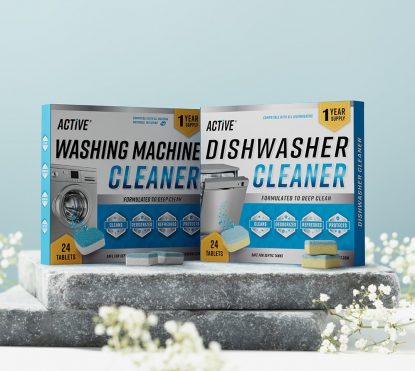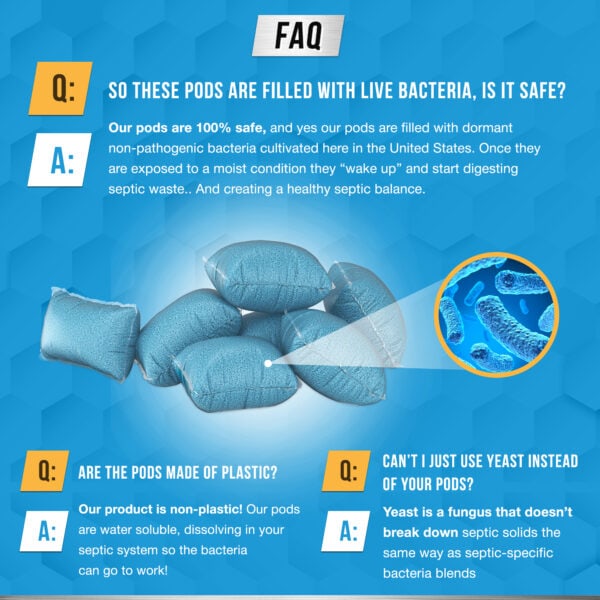A well-maintained septic tank is crucial when it comes to waste management; it’ll also prevent costly repairs in the future.
Importance of Septic System Maintenance
 More than 20 percent of U.S. households rely on these systems as an alternative to municipal wastewater systems.
More than 20 percent of U.S. households rely on these systems as an alternative to municipal wastewater systems.
Despite that, many people remain unaware or indifferent about the importance of proper maintenance.
For example, clogs and leaks can occur if your septic tank isn’t maintained properly. Not only would that lead to costly repairs but it could also lead to a complete replacement, which is very expensive process.
Potential Consequences: From Leaks To Strong Sewage Smells
A poorly-maintained system won’t just cause functional problems; it can have environmental implications too.
For example, untreated sewage—which is filled with harmful pathogens—can leak back into the environment, harming both humans and animals.
Not only that but it can also cause strong sewage smells to develop.
If you notice an unpleasant odor emanating from your property, chances are, there are underlying issues with your home’s wastewater drainage line.
How Do Septic Systems Work?
 A septic system primarily consists of two integral parts: the septic tank and leach field. The journey begins with wastewater flowing from your household drainage line into the septic tank, which acts as a holding area for waste material.
A septic system primarily consists of two integral parts: the septic tank and leach field. The journey begins with wastewater flowing from your household drainage line into the septic tank, which acts as a holding area for waste material.
Inside the tank, solids settle at the bottom while lighter substances float on top.
In between these layers lies mostly water along with dissolved particles that neither sink nor float. This liquid waste eventually gets released into your leach field dispersal system.
Bacteria in Conventional Septic Systems
The efficacy of a septic system relies heavily on certain types of natural bacteria present within the tank itself.
These microscopic organisms play a crucial role in the anaerobic digestion process, aka the breaking down of solid wastes.
Potent cleaning solutions like bleach or harsh drain cleaners pose a threat to these beneficial bacteria by killing them off when they enter through drains or toilets; this would lead to inefficient breakdowns and potential blockages inside the pipes.
In some cases, it can even lead to perforated pipes, which are costly to fix.
That’s why it’s so important to use ‘septic-safe’ labeled cleaning products – they are specifically formulated not to harm bacterial populations.
Regular Septic Tank Maintenance Procedures
Regular maintenance is key to keeping your septic system functioning properly.
Pumping Your Septic Tank
Household waste, including toilet paper, if left unchecked, can cause clogs, which can damage your septic system over time.
To prevent that, you want to pump your septic tanks regularly, ideally once every three to five years, depending on usage and size.
Depending on your location, it can cost anywhere from $200 to $600.
Caring For Drain Fields
 The leach field is responsible for gradually releasing organic waste into the surrounding soil; this allows natural filtration to occur.
The leach field is responsible for gradually releasing organic waste into the surrounding soil; this allows natural filtration to occur.
This area requires careful attention. For example, driving or parking vehicles over the leach field could potentially lead to serious harm, including compacted soil, which can impede normal operations.
Preserving Your Septic System with Safe Cleaning Products
Choosing the right household cleaning products is key when it comes to preserving your septic system.
More specifically, you want to choose products that are labeled as ‘septic-safe’ or ‘biodegradable’ as they don’t contain harmful ingredients that could disrupt bacterial balance within tanks.
Avoid Overloading The System With Detergents And Soaps
You also want to consider the amount of product that you’re using.
Remember, even if they’re marked as ‘septic-safe’, excess amounts can still affect the balance of bacteria.
This is especially true for laundry detergents as large amounts are released after each wash cycle; this can cause potential harm through chemical buildup inside the septic tanks.
Treat Your Septic System
Septic tank treatments are essential when it comes to maintaining the health of your system.
Essentially, these septic treatments are biological additives that are designed to replenish the levels of beneficial bacteria – the ones that are respnsible for breaking down human waste in the tank.
Some also contain organic solvents that are used to break down fat and grease.
ACTIVE Septic Tank Treatment
 Our septic treatment additive is specially formulated with dormant bacteria that will supplement the bacterial populations within your tank.
Our septic treatment additive is specially formulated with dormant bacteria that will supplement the bacterial populations within your tank.
Using the product regularly will not only help with the breakdown of waste but it’ll also mitigate odors that are often associated with poorly maintained systems.
It’s easy to use too – simply flush one pod down the toilet once every month. The back of the package even comes with a calendar that you can use to keep track of your cleaning schedule.
Septic Tank Maintenance – FAQs
How can I keep my septic system healthy?
Maintain your septic system by conducting regular inspections, scheduling pump-outs once every 3-5 years, and using septic-safe cleaning products.
It’s also recommended that you treat your septic tank with ACTIVE once a month.
What does proper maintenance involve?
Ideally, you want to check for leaks or clogs, schedule pump-outs based on usage and size, and manage the leach fields to prevent damage.
What are the signs that your septic tank is full?
If you notice slow drains, sewage odors around your property, or lush green grass over the drain field area, your tank may be full.
How many loads of laundry a day are safe to do with a septic tank?
To avoid overloading your leach field dispersal system, it is recommended to limit yourself to one load of laundry per day if possible. For larger amounts, it is best to spread them out throughout the week.
ACTIVE Septic-Safe Cleaning Solutions
With the Septic Treatment by ACTIVE, you’ll easily be able to maintain the balance of healthy bacteria in your septic system – and all you need is one pod every month.
We also offer a range of quality cleaning products and treatments for appliances and more, most of which are safe to use in homes with septic systems.
So what are you waiting for? Let us help take the hassle and guesswork out of your cleaning routine!















 More than 20 percent of U.S. households rely on these systems as an alternative to municipal wastewater systems.
More than 20 percent of U.S. households rely on these systems as an alternative to municipal wastewater systems. The leach field is responsible for gradually releasing organic waste into the
The leach field is responsible for gradually releasing organic waste into the
Ella –
Still in the dark, just gave it a shot, not something that instantly reveals if it’s effective or not!! SERIOUSLY????
Upvote if this was helpful (0) Downvote if this was not helpful (0) Watch Unwatch Flag for removal
Perry –
User-friendly
Upvote if this was helpful (0) Downvote if this was not helpful (0) Watch Unwatch Flag for removal
Kyle S. –
I’m clueless. I toss it in the toilet, it breaks down, the water turns blue, and I flush. Once it’s gone, I never want to see it again. The thought that I haven’t encountered it or similar items is enough for me. I imagine a family brewing bacteria in a Breaking Bad-like situation, and it oddly comforts me.
Upvote if this was helpful (0) Downvote if this was not helpful (0) Watch Unwatch Flag for removal
Angela Perry –
We can’t assess its effectiveness without seeing into the septic tank
Upvote if this was helpful (0) Downvote if this was not helpful (0) Watch Unwatch Flag for removal
Ray –
I see only 9 pods in the bag I ordered instead of 12
Upvote if this was helpful (0) Downvote if this was not helpful (0) Watch Unwatch Flag for removal
mcjunior1136 –
User-friendly
Upvote if this was helpful (0) Downvote if this was not helpful (0) Watch Unwatch Flag for removal
Kendra Austin –
They must be effective, as the technician noted my septic tank was working perfectly
Upvote if this was helpful (0) Downvote if this was not helpful (0) Watch Unwatch Flag for removal
Zoe –
Revived a neglected tank that hadn’t been used for years. First, pumped out the tank, then used one packet weekly for a month, followed by monthly use. It dissolves quickly in water. Highly recommend.
Upvote if this was helpful (0) Downvote if this was not helpful (0) Watch Unwatch Flag for removal
Micah S –
works well. Prevents unpleasant odors from my septic system
Upvote if this was helpful (0) Downvote if this was not helpful (0) Watch Unwatch Flag for removal
Yates –
Not sure if this will be useful until my septic technician gives me more information. One thing to definitely avoid is Rid X. Make sure to do your homework! I probably won’t be purchasing this product again either.
Upvote if this was helpful (0) Downvote if this was not helpful (0) Watch Unwatch Flag for removal